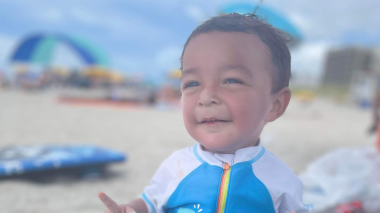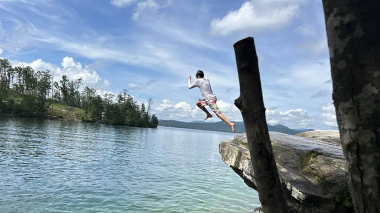The Centers for Disease Control and Prevention (CDC) recently reported a spike in respiratory infections caused by the bacteria Mycoplasma pneumoniae, most commonly known to cause walking pneumonia. The number of infections are rising, particularly among children between the ages of 2 and 4, though infections have increased in children between ages 5 and 17 as well. While an M. pneumoniae infection — which can present as either a chest cold or walking pneumonia — is usually mild, it’s important for parents to know the signs of infection and what to do if their child is sick.
Dr. Rhonda Patt, a pediatrician at Atrium Health Levine Children’s Charlotte Pediatrics, explains how worried parents should be, how walking pneumonia spreads and how to protect your child’s health.
The difference between walking pneumonia & pneumonia
“Pneumonia is a lung infection that causes airway swelling, fluid buildup in the air sacs in the lungs, cough with mucus and fever,” says Patt. “Pneumonia can be severe and require bed rest or hospitalization in some individuals."
Is walking pneumonia contagious?
Walking pneumonia is the same infection as regular pneumonia, but in a milder form, rarely requiring hospitalization.
Children and adults with walking pneumonia usually have cold-like symptoms and feel well enough for daily activities.
Signs of walking pneumonia in children
Walking pneumonia symptoms in children can include:
- Low-grade fever
- Cough
- Headache
- Sore throat
- Fatigue
- Chest pain or discomfort
- Mild rash
- Vomiting (particularly in younger children)
- Diarrhea (particularly in younger children)
- Watery eyes (particularly in younger children)
How is walking pneumonia transmitted?
Walking pneumonia is highly contagious and can be spread through respiratory droplets, typically from sneezes and coughs, though you can also contract it from someone talking, breathing or singing near you for an extended period of time.
While you can contract walking pneumonia at any time of year, it’s most common in the fall and winter months.
To prevent the spread of walking pneumonia:
- Keep your child home from school or daycare when they are sick.
- Be sure your whole family washes their hands regularly, particularly after coughing, sneezing or using the restroom, and before touching their face, handling food or eating. Wash hands with soap and water for at least 20 seconds. If you don’t have access to soap and water, use an alcohol-based hand sanitizer.
- Avoid being around others who are ill.
- Encourage children to cover coughs and sneezes with a tissue and discard the tissue in a wastebasket, rather than coughing or sneezing into their hands.
- If tissues aren’t available, cough into the crook of your arm.
- Don’t share toothbrushes, utensils or cups.
How to treat walking pneumonia in children
Treat walking pneumonia symptoms like you would a typical cold. If your child is sick for more than five days, contact their pediatrician.
“Most children recover well with at-home care and proper hydration, but sometimes they may need antibiotics to fully recover if the infection was caused by bacteria,” says Patt. “When caring for walking pneumonia at home, encourage your child to drink plenty of fluids and rest. You can give them acetaminophen or ibuprofen for fever or chest pain but check with their pediatrician before giving them a cough suppressant, as this could affect how well their lungs can clear mucus. The good news is most walking pneumonia infections are viral and will resolve on their own with at-home care.”
If you’re concerned that your child may have walking pneumonia, contact their pediatrician. Find a Levine Children’s pediatrician near you.



